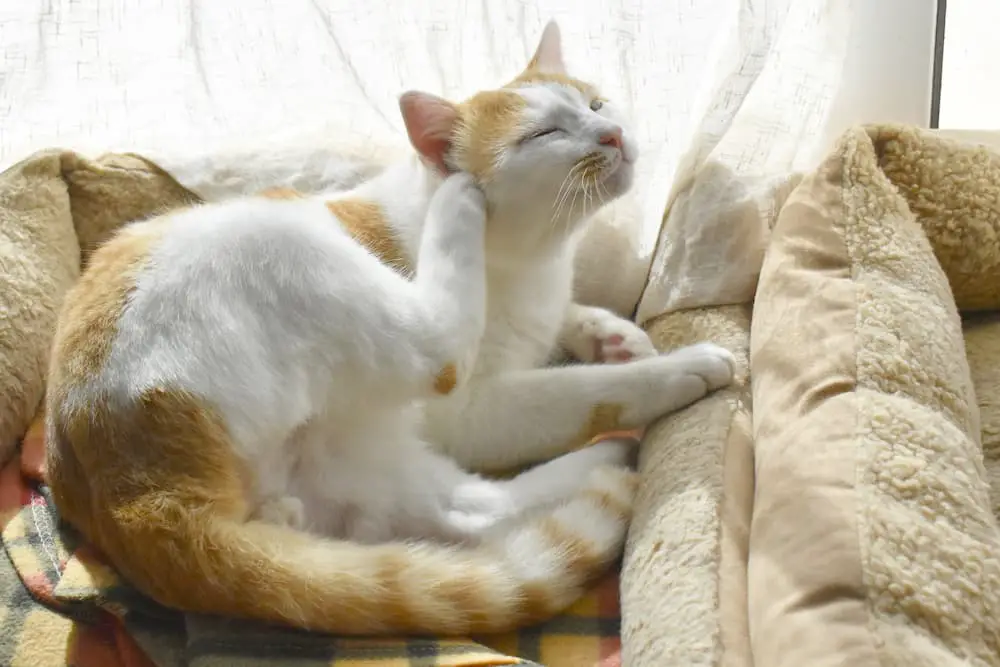
In my practice, I diagnose upper respiratory infections in cats from my shelter, from my clients, and even from my own cats after they have come home from a cat show. It is a very common problem in cats and also a very contagious one. The infection can also contain more than one infectious agent which is why many veterinarians call it the Feline Upper Respiratory Complex. I will try to explain the causative agents and what is done to prevent reappearing infections.
Unless there is virus isolation test performed, culture, and PCR test performed on a cat, there is not a good way to determine exactly which viruses and/or bacterium are present in an upper respiratory infection (or URI). As a result, many veterinarians are simply determining the causative agent based on the clinical signs. The clinical signs are very similar, and actual diagnosis may be difficult. Typically, the feline upper respiratory complex is treated with antibiotics and supportive care. Many times in young cats, an immune booster like fortiflora or lysine is used to help reduce or prevent infections. Many times the supportive care may include fluid therapy, oral supplements, and drugs to reduce nasal discharge.
The most common pathogen is Rhinotracheitis, or herpes virus. So many people are afraid to hear this diagnosis due to the severity it can cause. In actuality, many times it is not severe and can be treated successfully. The virus is similar to the human cold sore – which means that it will be a life long infection with the cat. It can clear from the pet, and later it can return to cause signs (this is very common when the cat becomes stressed by a change in their environment such as a move or a new pet or family member). It may not be as severe as before, but it is still an active infection. I heard one report where 95% of cats are infected with the virus; they are simply not showing signs. Once signs are seen, the pet is contagious to other cats, especially kittens.
The second pathogen is Calicivirus. This virus is also lifelong in cats, but outbreaks do not always occur. Adult cats can shed the virus without showing any external signs. During active infections, it is common for the cats to have ulcers in the mouth and gums which will decrease appetite.
The third is Bordatella. This infection is a bacterial infection that is very similar to whooping cough in humans. It can cause the same nasal discharge, but many times there is a cough included. Bordatella is usually not a common problem in cats, but we do diagnose it more in show cats and purebreds. It typically responds to antibiotics unless it is a resistant strain. A culture is the only way to accurately diagnose Bordatella. Bordatella can also be harbored in pets and no clinical signs are expressed. When a case of Bordatella is diagnosed, all pets (both dogs and cats) should be treated to eliminate the bacteria from the household.
The fourth common contagion is Chlamydia. Chlamydia is not common in household pets, but it is a problem in catteries and at shows. New kittens could have Chlamydia in the complex. I also diagnose many URI in shelter animals which I suspect is Chlamydia. With appropriate antibiotics, Chlamydia can be eliminated from your pet.
Finally, I would like to say that there could be other causes of an upper respiratory infection in our pet cats. Many times, the cats will have an infection that is minor and it could clear with no treatment. Other times, the infection can become severe and immediate medical treatment is necessary. The pathogens can also lay dormant in a pet with no signs and stress can lower the immune system causing the disease to begin showing signs. While in dormancy, many tests (including PCR) may not show the disease present. A negative test does not rule out carrier cats in a household! That is why we call it a complex. It has multiple pathogens, different treatments, and chronic carrier states that re-occur. Just remember to get all URI checked by a veterinarian and give plenty of TLC while these babies have a runny nose.







